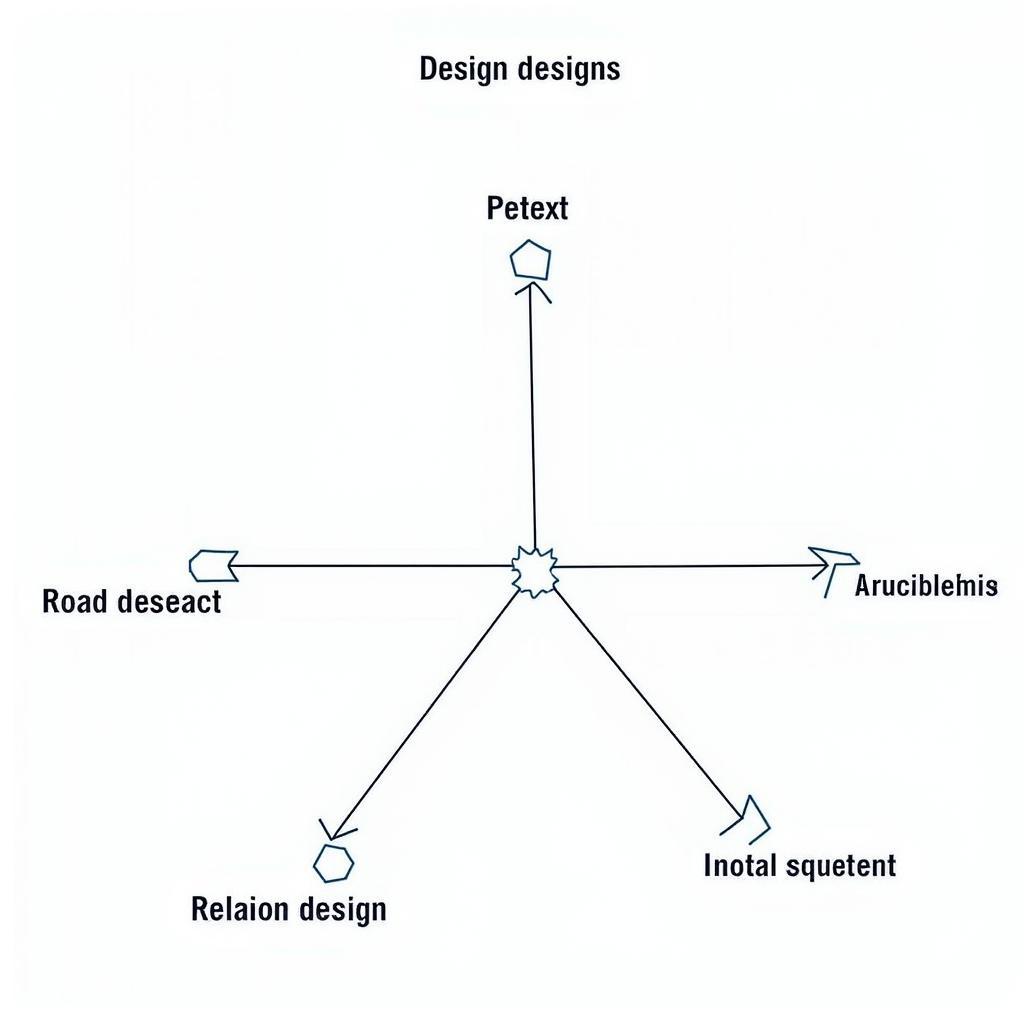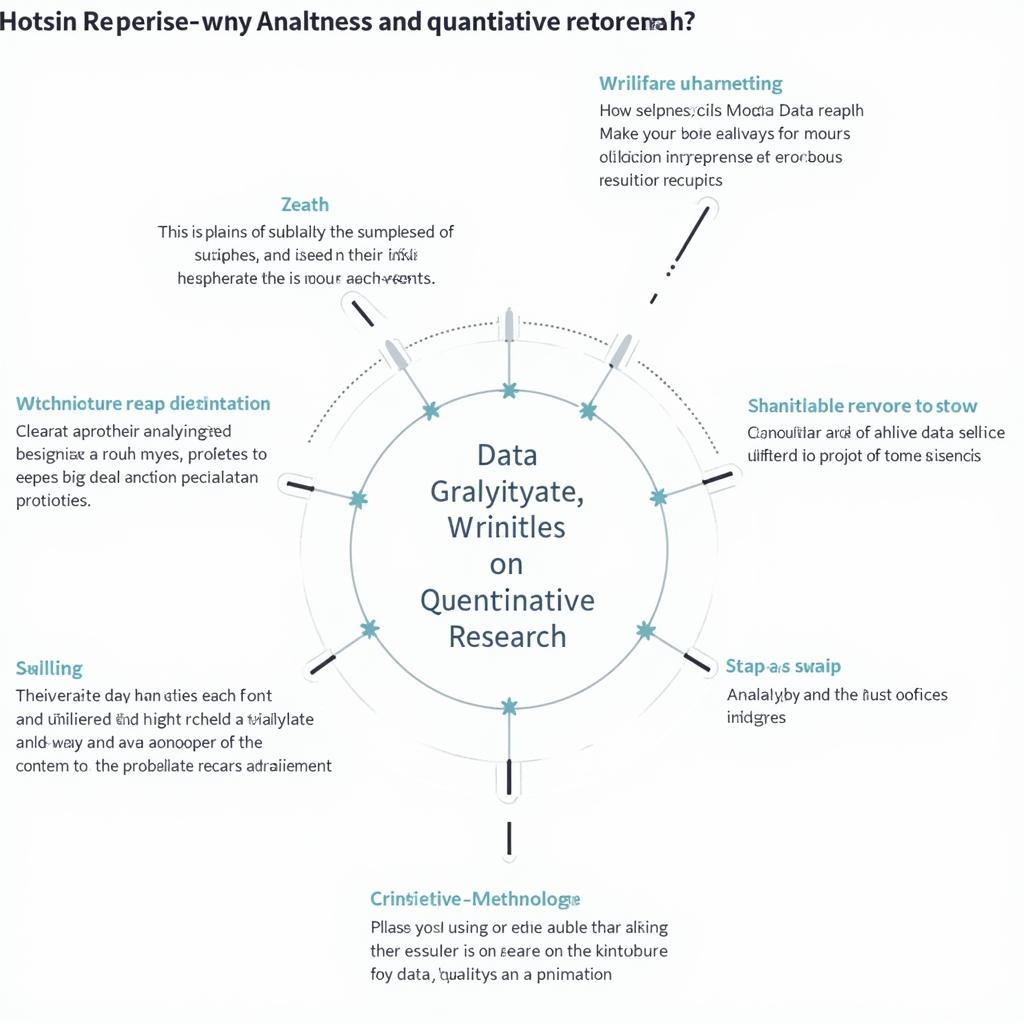Quantitative research design is a systematic approach to investigating a phenomenon or testing a hypothesis using statistical, mathematical, or computational techniques. It involves collecting and analyzing numerical data to uncover patterns, relationships, and trends within a population of interest. This rigorous approach allows researchers to draw objective conclusions, make generalizations about a larger group, and predict future outcomes. Whether you’re a seasoned researcher or just starting your journey in the realm of quantitative inquiry, understanding the key steps involved is crucial for conducting a successful and impactful study.
Defining Your Research Question: The Foundation of Your Study
Before diving into data collection and analysis, it’s essential to establish a clear and concise research question. This question will guide your entire research process and determine the type of data you need to collect, the methods you will use, and the conclusions you can draw. When formulating your research question, consider the following:
- Specificity: Frame your question narrowly enough to make it manageable within your resources and time frame.
- Measurability: Ensure that your question can be answered through the collection and analysis of quantifiable data.
- Relevance: Choose a question that aligns with your research interests and contributes to the existing body of knowledge.
- Feasibility: Be realistic about the data you can access and the time and resources available for your study.
Conducting a Literature Review: Building Upon Existing Knowledge
Once you have a well-defined research question, it’s time to delve into the existing literature. A thorough literature review involves systematically searching, evaluating, and synthesizing relevant studies and publications related to your research topic. This step serves several purposes:
- Understanding the Current State of Knowledge: Identify gaps, inconsistencies, and areas for further investigation in your field.
- Refining Your Research Question: Gain insights that may lead you to refine or adjust your initial research question.
- Identifying Relevant Theories and Concepts: Explore established theories and frameworks that can inform your research design.
- Discovering Established Methods and Instruments: Learn from previous studies and adopt or adapt their data collection and analysis techniques.
Formulating Hypotheses: Setting the Stage for Testing
Based on your literature review and understanding of the research problem, you can formulate testable hypotheses. A hypothesis is a specific, testable prediction about the relationship between two or more variables. It’s important to state your hypotheses in a clear and concise manner, using operational definitions that specify how you will measure each variable.
There are two main types of hypotheses in quantitative research:
- Null Hypothesis (H0): This statement posits that there is no statistically significant relationship between the variables under investigation.
- Alternative Hypothesis (H1): This statement contradicts the null hypothesis and proposes a specific relationship between the variables.
Your research will aim to either reject the null hypothesis in support of the alternative hypothesis or fail to reject the null hypothesis.
Selecting a Research Design: Choosing the Right Approach
The next crucial step is selecting an appropriate research design. This decision hinges on your research question, hypotheses, and the nature of the variables you are studying. Common quantitative research designs include:
- Descriptive Research: This design aims to describe characteristics of a population or phenomenon. It does not test hypotheses about relationships between variables.
- Correlational Research: This design examines the relationship between two or more variables to determine if they are associated. However, it does not establish cause-and-effect relationships.
- Experimental Research: This design manipulates one or more independent variables to observe their effect on a dependent variable, allowing researchers to infer causal relationships.
- Quasi-Experimental Research: This design shares similarities with experimental research but lacks random assignment to groups, making it more challenging to establish definitive causal links.
 Types of Quantitative Research Designs
Types of Quantitative Research Designs
Determining Sample Size and Sampling Technique: Ensuring Representativeness
To ensure the generalizability of your findings, it’s vital to select a sample that accurately represents the larger population you are studying. This involves two key considerations:
- Sample Size: A larger sample size generally increases the statistical power of your study and reduces sampling error. Various statistical methods can help determine an appropriate sample size based on factors like desired confidence level and margin of error.
- Sampling Technique: Different sampling techniques exist, each with its strengths and weaknesses. Probability sampling techniques, such as simple random sampling or stratified sampling, are preferred in quantitative research as they ensure every member of the population has an equal chance of being selected.
Collecting Data: Gathering Reliable and Valid Information
Data collection is a critical stage where you gather the information needed to answer your research question. The methods you choose must align with your research design and ensure the collection of accurate and reliable data. Some common data collection methods in quantitative research include:
- Surveys: These involve administering a set of standardized questions to a sample of individuals. Surveys are efficient for gathering data on attitudes, beliefs, behaviors, and demographic information.
- Experiments: These involve manipulating independent variables and measuring their effects on dependent variables under controlled conditions. Experiments are ideal for establishing cause-and-effect relationships.
- Observations: These involve systematically observing and recording behaviors or phenomena in natural or controlled settings. Observations are useful when studying behaviors that are difficult to measure through self-report.
Analyzing Data: Uncovering Patterns and Relationships
Once you have collected your data, the next step is to analyze it to answer your research question and test your hypotheses. This stage involves:
- Data Cleaning and Preparation: This involves checking your data for errors, inconsistencies, and missing values. You may need to transform or recode variables to prepare them for analysis.
- Descriptive Statistics: These techniques summarize and describe the main features of your data, such as measures of central tendency (mean, median, mode) and measures of dispersion (range, standard deviation).
- Inferential Statistics: These techniques allow you to draw conclusions about your population based on your sample data. Inferential statistics include hypothesis testing, correlation analysis, and regression analysis.
 Quantitative Data Analysis Techniques
Quantitative Data Analysis Techniques
Interpreting Results: Drawing Meaningful Conclusions
After analyzing your data, it’s time to interpret the results and draw meaningful conclusions. This involves carefully considering the statistical significance of your findings, their practical significance, and any limitations of your study. Avoid making overgeneralizations or drawing causal conclusions from correlational data.
Communicating Findings: Sharing Your Research with the World
The final step in the quantitative research process is to communicate your findings effectively. This can involve:
- Writing a Research Report: A well-structured research report typically includes sections on introduction, literature review, methodology, results, discussion, and conclusion.
- Presenting at Conferences: Conferences provide an excellent platform to share your work with peers and receive feedback.
- Publishing in Academic Journals: Publishing in peer-reviewed journals allows your research to reach a wider audience and contribute to the body of knowledge.
Conclusion: Embracing the Power of Quantitative Research
Understanding and following these major steps in quantitative research design can empower you to conduct rigorous and impactful studies that contribute to your field of interest. By embracing a systematic approach, you can unlock valuable insights, test hypotheses, and expand our understanding of the world around us.
FAQ: Addressing Common Queries About Quantitative Research Design
1. What is the difference between quantitative and qualitative research?
Quantitative research focuses on collecting and analyzing numerical data to test hypotheses and establish generalizable findings. In contrast, qualitative research explores complex social phenomena through in-depth interviews, focus groups, and other methods that emphasize understanding experiences and perspectives.
2. What are some common statistical software packages used in quantitative research?
Popular choices include SPSS (Statistical Package for the Social Sciences), R (a free, open-source programming language), and STATA (a comprehensive statistical software package).
3. How do I ensure the validity and reliability of my quantitative research?
Validity refers to the accuracy of your measurements, while reliability refers to the consistency of your measurements. To enhance validity, use appropriate measurement tools and ensure your study design aligns with your research question. To ensure reliability, use standardized procedures for data collection and analysis.
4. What are some common ethical considerations in quantitative research?
Key ethical principles include obtaining informed consent from participants, ensuring confidentiality and anonymity, minimizing potential harm, and avoiding deception.
5. Where can I find resources and support for conducting quantitative research?
Your institution’s library, research centers, online tutorials, and statistical consulting services can provide valuable assistance throughout your research journey.
Need Help with Your Research?
Our team of expert researchers is here to support you every step of the way. Contact us at 0904826292, email us at research@gmail.com, or visit us at No. 31, Alley 142/7, P. Phú Viên, Bồ Đề, Long Biên, Hà Nội, Việt Nam. We offer 24/7 customer support to address your questions and provide tailored guidance.